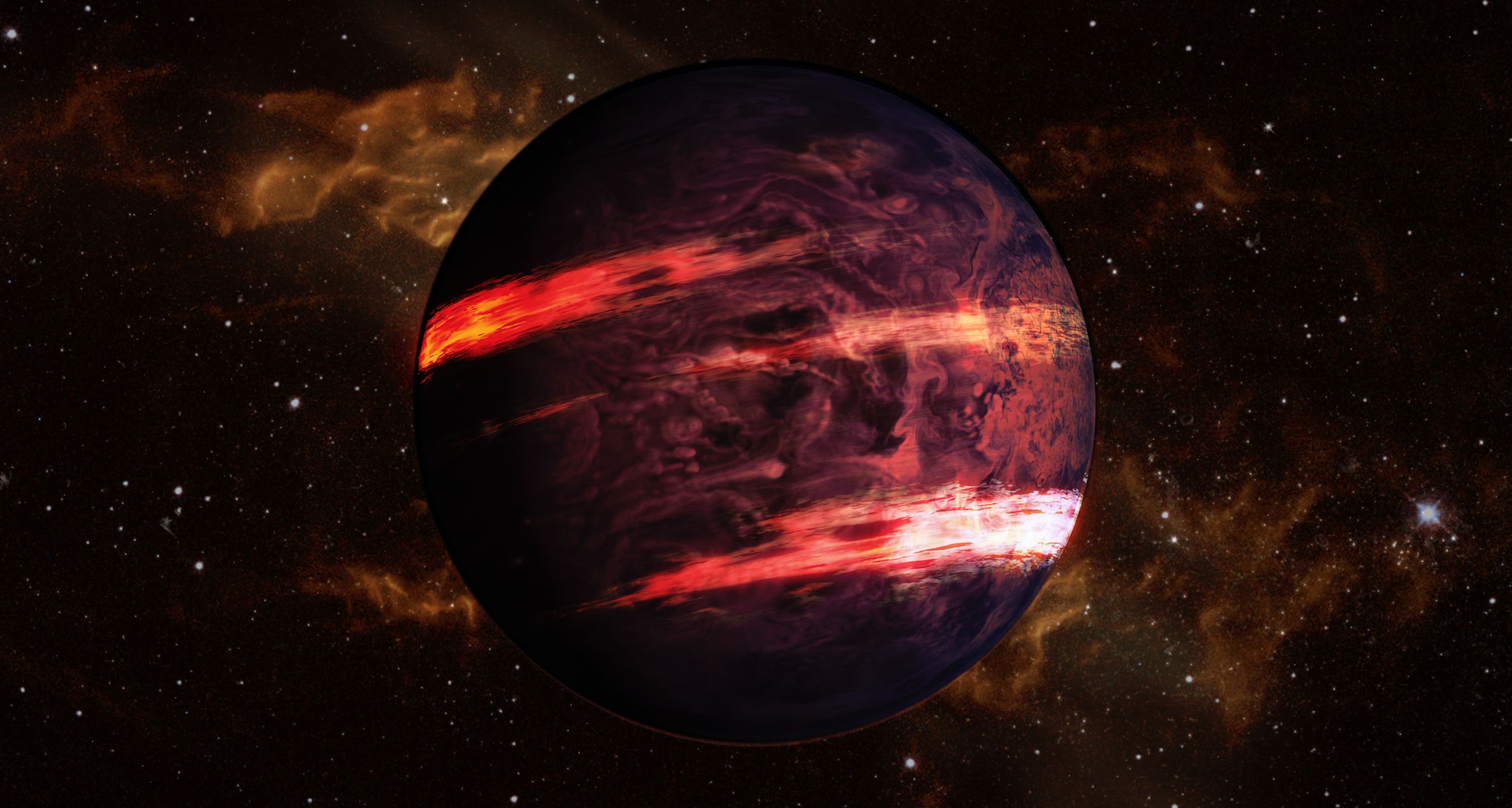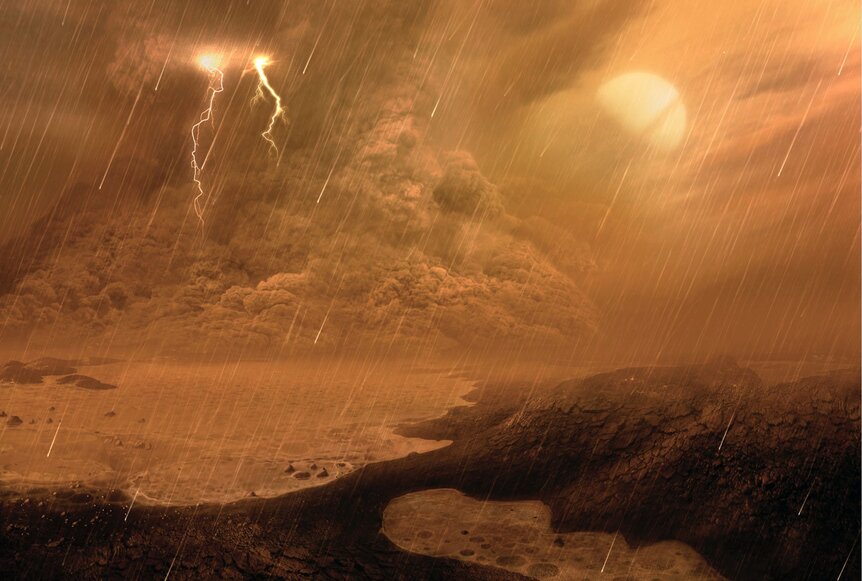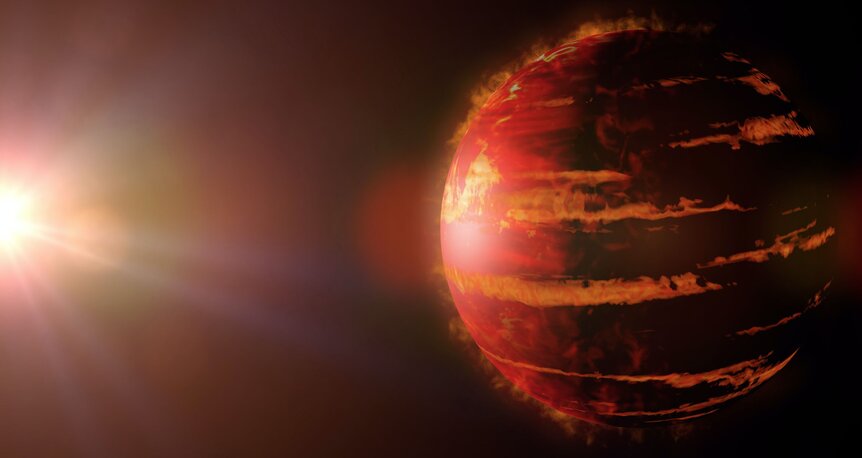Create a free profile to get unlimited access to exclusive videos, sweepstakes, and more!
Better buy a bigger umbrella! Mordorian, ultra-hot exoplanet rains liquid iron

While it's perfectly normal to complain from time to time about the inconveniences of severe weather in terms of hurricanes, tornadoes, floods, earthquakes, and severe lightning storms, a recently discovered extreme exoplanet has us beat on all counts, with molten iron regularly raining down from its hostile skies.
Sporting the particularly sinister name of WASP 76b, this newfound heavenly body featuring an iron-rich atmosphere was spotted by astronomers at the European Southern Observatory (ESO) some 640 light-years from Earth in the Pisces constellation. As noted in an ESO press release, the exoplanet's scorching days tend to vaporize the planet’s abundant supply of iron, which then cools as temperatures drop at night, causing the element to fall back to the surface as a warm metallic rain.
Using a relatively new tool to the ESO's astronomical toybox called ESPRESSO (Echelle SPectrograph for Rocky Exoplanet and Stable Spectroscopic Observations), this next-level planet hunting device is the designated successor to HARPS, one of most productive and precise planet hunters in use. Nourished by data from the observatory's four main telescopes, the exacting device's main goal is to collect very high-precision radial velocity measurements of solar-type stars to hunt for rocky planets.
This hellish scenario was described in a new study published in the online journal Nature, and provides details on the ultra-hot giant exoplanet, and how its high-temperature atmosphere is the perfect laboratory for examining extreme planetary climates and chemistry.
“The observations show that iron vapour is abundant in the atmosphere of the hot day side of WASP-76b," notes astrophysicist María Rosa Zapatero Osorio of the Centre for Astrobiology in Spain, and the head of the ESPRESSO team. "A fraction of this iron is injected into the night side owing to the planet's rotation and atmospheric winds."
WASP-76b is what's known as tidally locked, similar to the moon orbiting our Earth, meaning that one half of the planet is perpetually staring at its sun, and the other is left in a state of permanent midnight. That vaporized iron in the sweltering zone drifts over to the dark side via turbulent winds, where it becomes a rainstorm of Mordorian proportions.
“One could say that this planet gets rainy in the evening, except it rains iron,” project leader David Ehrenreich of the University of Geneva said in the press release. “What we have now is a whole new way to trace the climate of the most extreme exoplanets.”




























